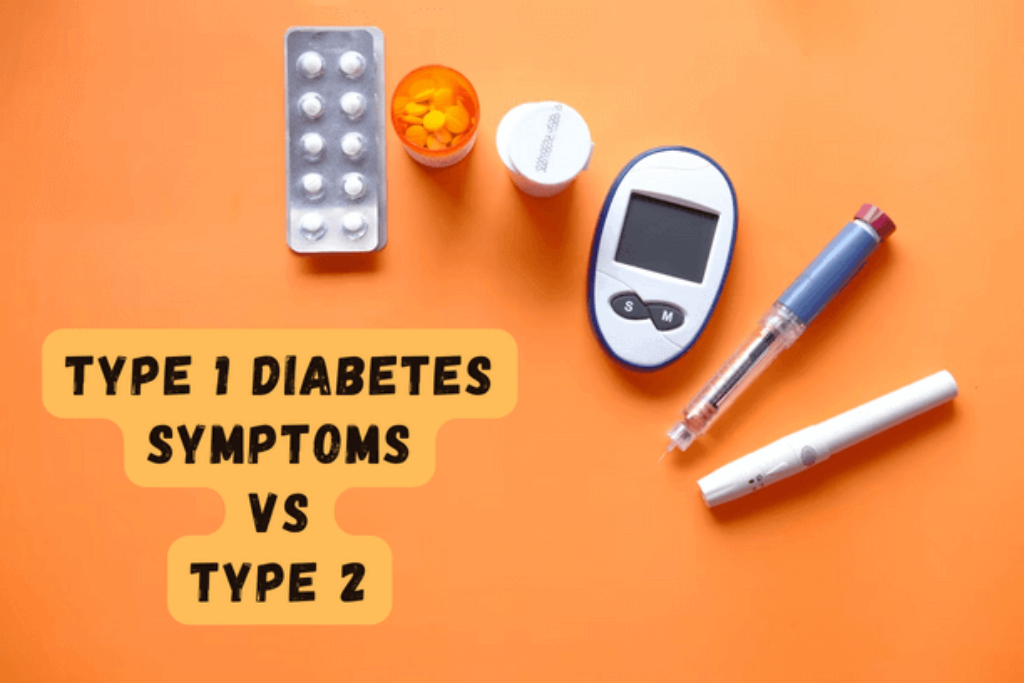Diabetes is a deadly disease becoming a big public health concern in almost all countries worldwide. From China to America, all countries are reporting more and more cases of diabetes every year. And more people die every year from the disease than we’d imagine. In 2021, around 6.7 million people worldwide will have died because of health concerns related to diabetes.
Many people think they won’t get diabetes because they’re young, but that is not true; you can have diabetes even if you’re young and are obese or have poor health habits. Because of how common diabetes has become, we believe it is essential for us to know as much as possible about the disease.
We’ve discussed what diabetes is, the different types of diabetes, and how type 1 diabetes symptoms differ from type 2 diabetes symptoms. Keep reading this article to learn if and what kind of diabetes you might have.
What is Diabetes?
Diabetes is a chronic disease that lasts for a long time. The body breaks down glucose to be released into the bloodstream and produce energy.
Diabetes hinders the body’s ability to turn food into energy and damages the body’s immune system. When your body produces glucose, it sends signals to the pancreas to release insulin. When the pancreas releases insulin, it initiates the process of energy production.
When someone is diagnosed with diabetes, their body isn’t producing enough insulin to keep blood sugar levels under control. The lack of insulin causes the cells to become insulin resistant. Because of that, the bloodstream becomes full of excess blood sugar.
What are the types of diabetes?
A person can be diagnosed with two types of diabetes: type 1 or 2. Even though type 1 and type 2 diabetes may sound the same, they can be caused by different reasons.
The distinguishing factor between type 1 diabetes and type 2 is that type 1 is an autoimmune reaction in the early years of life. And type 2 diabetes is the kind that occurs later in life because of lifestyle factors.
People with type 1 diabetes can live long and prosperous lives despite damaged immune systems. People diagnosed with type 1 diabetes must watch what they eat and keep their condition under supervision.
What causes type 1 diabetes?
Type 1 diabetes is caused by an autoimmune condition that affects the body’s immune system. This autoimmune reaction hinders insulin production. Around 5–10% of people diagnosed with diabetes have type 1 diabetes. Since type 1 diabetes occurs in the body early in life, most patients tend to be children and young adults.
Researchers are yet to understand why the autoimmune reaction occurs in the first place. Still, they believe it might be because of genetics and environmental reasons.
What causes type 2 diabetes?
Type 2 diabetes is mostly caused by two interrelated problems occurring simultaneously. Firstly, the pancreas stops producing sufficient insulin. Secondly, the body cells become resistant to the effects of insulin. Because of that, the body fails to function properly.
Even though type 2 diabetes is most common among adults, it can occur in childhood. Type 2 diabetes is so common among adults that it is known as “adult-onset” diabetes. But more and more kids are becoming affected by it because of the rising rates of obesity.
Researchers don’t know what causes the body to have type 2 diabetes, which is untreatable. But they do know that lifestyle choices, the environment, and genetics play a role in causing type 2 diabetes. Even though there’s no cure for type 2 diabetes, you can keep it under control by adopting healthy life choices.
Type 1 diabetes symptoms vs. type 2
Type 1 diabetes symptoms:
Since type 1 diabetes develops in the earlier stages of life, parents must keep their children under observation to check for signs of type 1 diabetes. Parents should be especially concerned about their children having type 1 diabetes if the family has a history of it.
To find out if you or your children have type 1 diabetes, you need to look for the following symptoms:
- Thirstier than normal.
- Losing weight. Urinating frequently.
- Bedwetting in children who have never wet their bed.
- Feeling extremely hungry at night.
- Feeling agitated or experiencing other mood swings.
- I’m tired and feeble.
- Having hazy eyesight.
If you or your kids have any of these symptoms, you should visit a doctor for a proper diagnosis.
Type 2 diabetes symptoms:
Because type 2 diabetes occurs in the body later in life, you might get it at any point. Type 2 diabetes can be controlled by improving your lifestyle choices.
Type 2 diabetes patients have the following symptoms:
- Increased thirst.
- Often urinating.
- Increased appetite.
- Unwanted loss of weight.
- Distorted vision.
- Slowly heaving wounds.
- Various infections.
- Tingling and numbness in various body parts.
- Browned patches of skin forming.
Summary
We can see in this article that even though type 1 and type 2 are different types of diabetes and are caused by varying health conditions. Despite the two types being caused by different conditions, we can also see that the symptoms of both of these diseases are similar.
You should always eat, exercise, and keep healthy to prevent type 2 diabetes. Living with diabetes can be rough, so it is important to take precautions early in life to prevent it. On the other side, if you or your child are type 1 diabetes patients, always follow the guidelines provided by your doctor.
Never take the symptoms of diabetes for granted because it can cost you your well-being. If you think you’re showing symptoms of diabetes, then always be on the lookout for these symptoms. If the symptoms continue, book an appointment with your doctor as quickly as possible.
Related Articles: Type 2 Diabetes is Genetic – Detailed answer
